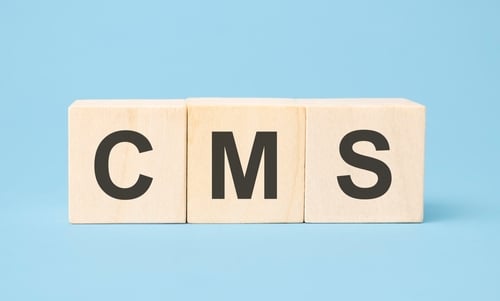
Website security is a critical priority for every tech stack that a company chooses to implement. After all, data breaches can lead to severe issues for affected customers and businesses. The consequences can include a loss of control over sensitive data, identity theft and fraud, loss of trust, and damage to reputation. The financial ramifications can also be extreme. In 2022, the average data breach cost in the United States totaled 9.44 million dollars. To prevent widespread issues, companies need to stay updated with cybersecurity practices. However, maintaining website security is challenging. As more businesses opt for a Headless Content Management System (CMS), questions about security arise. This guide takes a deep dive into the world of Headless CMS security - answering commonly asked questions and providing tips for best practices.
Is Headless CMS secure?
Businesses new to Headless CMS commonly ask, “is Headless CMS safe?” The short answer is yes, but the complete explanation is more nuanced. An optimized Headless CMS provides more opportunities for security measures, more layers of protection, and fewer opportunities for attack. Let’s explain why.
A Headless CMS is a backend content management system that does not have a defined frontend system. With a Headless CMS, content transmits to multiple devices, and the devices handle how the data is presented. The significant benefits of a Headless CMS include increased flexibility and control, as the user can fine-tune every facet of the backend without any of the limitations imposed by a traditional, coupled CMS. With a Headless CMS, enterprises can achieve enterprise-grade performance and cybersecurity, provided all proper configurations and best practices are in order.
Traditional CMS vs. Headless CMS Security
So, how do traditional CMS and Headless CMS differ when it comes to security? Here are the top three differences businesses need to know.
- Resilience to Breaches
A traditional CMS allows users to create and publish content using standardized, stylized templates. The content is stored in a database and displayed to viewers based on the template's parameters. If a breach occurs in a traditional CMS, the entire continuity of the site is likely to be compromised.
In contrast, a Headless CMS is a standalone backend system that delivers content through a content distribution network (CDN) instead of a database. An application program interface (API) publishes content as read-only. Suppose a breach occurs in a Headless CMS. In that case, the issues can most likely be resolved on the backend without affecting the frontend user interface or disrupting the continuity of the site.
- Vulnerabilities
A traditional CMS presents more vulnerabilities than a Headless CMS. In a traditional CMS, the front end and back end are linked, so if a hacker gains access to one part, they can potentially access everything. This is not the case with Headless CMS because one part does not directly lead to another. Additionally, the databases used to store content in a traditional CMS also present varying degrees of vulnerability, depending on the protections that are in place. If a solution is outdated, it is an easy target for unauthorized users because the legal coding is likely widely understood and lacking in the most advanced security features. In contrast, a Headless CMS generally has fewer vulnerabilities due to unique coding and complex architecture. Afterall, a Headless CMS is an API-first CMS and likely has API best-practices in place, in addition to security layers in the infrastructure.
- More Opportunities for Protection
A Headless CMS presents more substantial opportunities for protection than a traditional CMS. While a traditional CMS relies heavily on strong passwords and up-to-date applications, a Headless CMS utilizes those protection measures and more. The API that publishes content must be outfitted with security features, and layers of code can be built on top of the content to protect it against attacks. For example, an application layer and a security layer on top of the content make it more difficult for malicious parties to get through.
Best Practices to Improve Headless CMS Security
To improve Headless CMS security, abide by the following best practices:
- Ensure passwords are strong and stored securely.
- Ensure all software is up-to-date.
- Ensure all API security best practices are implemented.
- Properly encrypt data.
- Use HTTPS and SSL to protect content transmitted over the internet.
- Periodically review users, roles, and permissions and make sure they are up-to-date and accurate. Eliminate any unnecessary access.
- Continually monitor for changes, vulnerabilities, and potential threats.
- Create a streamlined process for employees and team members to report suspicious website issues and create a strategy for looking into those reports.
- Partner with experts who can advise on ongoing developments in best practices.
Encora offers end-to-end IAM and cybersecurity services including novel ways to design and implement Headless CMS security mechanisms. Encora is a digital engineering services company specializing in next-generation software, digital product development, advanced digital strategy, market activation solutions, and cutting-edge technology practices. Encora’s software engineers are well-versed and highly skilled in Headless CMS security across a wide range of industries. Please reach out to Encora with questions or to get started.